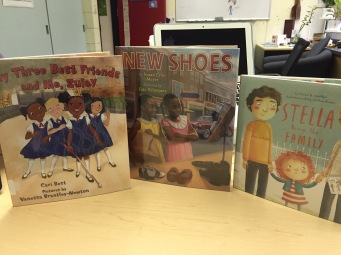What do you think about when it is silent?
I started my teaching career at a Quaker school in Long Island, NY. I had made the transition from working in higher education; had moved from Connecticut to New York; and was getting ready to marry my sweetheart. New job, new place, new friends, new life.
Though those were major transitions, for sure, I was not prepared for a different transition. I was not ready for silence.
As a Quaker school in a wealthy, suburban community, we did our best to uphold values of simplicity and honesty; humility and service; and kindness in the light of each other. While we sometimes fell short of those ideals, one thing we did well was silence. Every week, our community came together and gathered in the Meeting House.
In my own upbringing, I was raised Catholic and actively practicing. I was used to the singing, prayers, recitations and even, what we joyfully refer to as, Catholic aerobics — the up-down-sit-stand-kneel-stand routine that occurs in a 60-minute Mass.
But, Meeting for Worship was different. Meeting for Worship meant we walked into a  wooden shelter, walked into the space in silence, and sat. We just sat. At first, I was so uncomfortable. I kept looking around at others. I kept twiddling my thumbs. My eyes darted back and forth from row to row and seat to seat. I kept looking at my watch and wondering how much longer I had to sit on this uncomfortable, rickety, wooden bench. Only 2 minutes had passed since the last time I looked. I felt awkward when members of the Facing Bench, a small group of elders or community leaders, were sitting across from the rest of the gathering. I didn’t know whether to look at them, past them, away from them, or down at the floor.
wooden shelter, walked into the space in silence, and sat. We just sat. At first, I was so uncomfortable. I kept looking around at others. I kept twiddling my thumbs. My eyes darted back and forth from row to row and seat to seat. I kept looking at my watch and wondering how much longer I had to sit on this uncomfortable, rickety, wooden bench. Only 2 minutes had passed since the last time I looked. I felt awkward when members of the Facing Bench, a small group of elders or community leaders, were sitting across from the rest of the gathering. I didn’t know whether to look at them, past them, away from them, or down at the floor.
I remember the day that Meeting for Worship changed for me. I was feeling particularly unsettled and just wanted to go home, curl up on my couch and watch television. I filed in silently with the rest of the school. I sat on the bench. And, I took in a deep breath. I began to feel a wave of warmth come over me. I felt my heart racing. And, I took in another deep breath. Then, I felt my body settle into the silence. In that moment, a deep sense of peace came over me. My mind was open; my heart was filling listening to the words of community members who were moved to speak; and I felt my body lighten as my own tensions eased away.
I spent four years in the practice of attending Meeting for Worship. After I left Friends Academy, I continued some of the practices I had learned. I started each meeting with a moment of silence. I taught my students to end each workshop in silent reflection, speaking when so moved.
But, time slips away and my life returned to the busy day-to-day world. Before I knew it, nearly 12 years had passed since I worked at a Quaker school.

Speed Dialogue Activity
Last night, I had the privilege of delivering the keynote address to the Quaker Youth Leadership Conference. And, after I gave my address and facilitated an activity, I could leave the conference and begin the long drive home. As I began to pack up my computer and grab my jacket, the conference organizers announced that it was time for Meeting for Worship. And, I felt that same sense of deep peace — just at the mention of the phase Meeting for Worship — and sat down.
For the next 40 minutes, I allowed my mind to settle. I gave myself over to silence. I listened to the words of community members who were moved to speak. And, I felt my body lighten as my own tensions eased away.
I reflected on the theme of the conference: (In)Equity, Past, Present and Future. I reflected on my own activism, my collective roll in this world. I reflected on my own stereotypes, biases, and powerful messages that I received about (M)yself and about (O)thers.
And, in that silence, I began to think about what stirred my conscience. I began to think about the power behind my own words and ideas. I began to think about the power behind the systems I am a part of and the ways I treat others.
What stirred my conscience is that silence is not the absence of noise; it is the presence of peace.

A wonderful friend and student from FA
What stirs your conscience?
Liza


